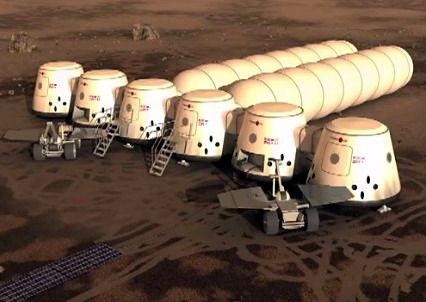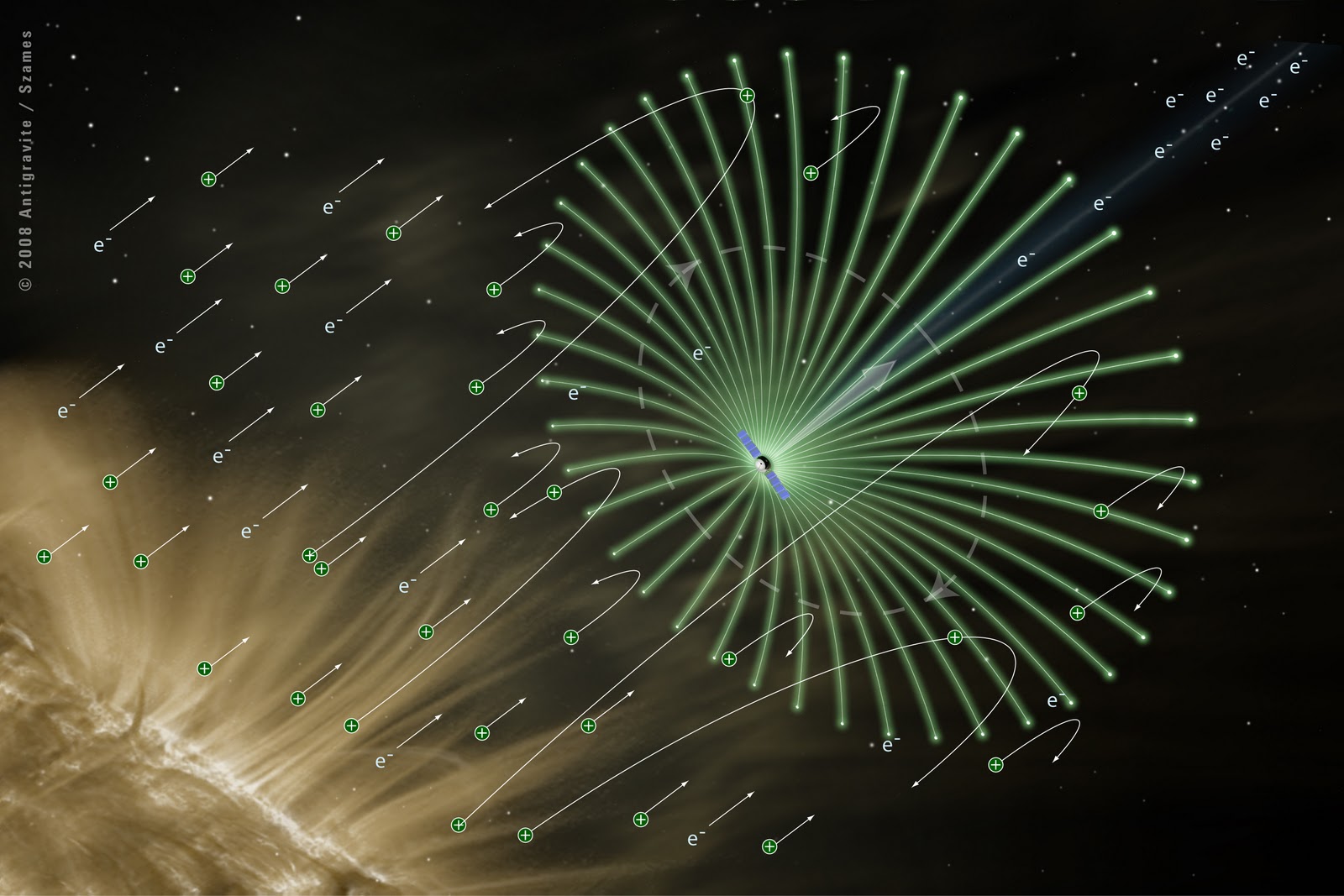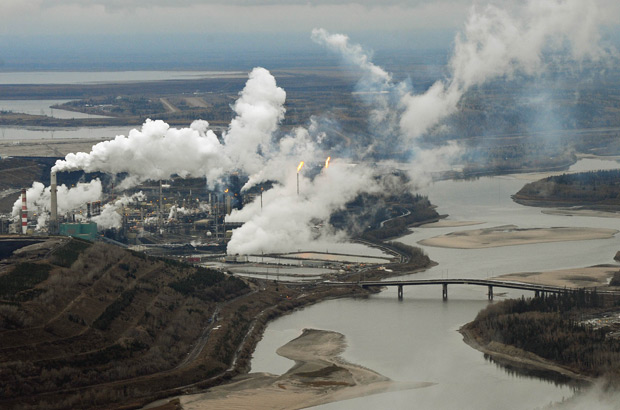Welcome to our second weekly headlines for 2013. This week’s stories include:
- A Science Rendezvous to Inspire the Next Generation;
- Next Steps for the Mars One Project;
- Feeding the Planet Would Be Easier if We Didn’t Waste Half of What We Produce;
- New Electric Sail Technology May Provide Power to Spacecraft without Propellant;
- Oil Sands Under Scrutiny in Latest Water Pollution Study.
A Science Rendezvous to Inspire the Next Generation
This week I was introduced to Kelsey Miller, Executive Director of Science Rendezvous, an organization with a mission to make science accessible to the public by annually showcasing research in locations right across Canada all on the same date, like a giant simulcast.
In 2013 this festival of science will happen on May 11. The goal is not just to get researchers talking about their world class investigations, but also to present science to the next generation as something cool and worth pursuing. Over 300 open-to-the-public events are planned at venues that include universities, hospitals, libraries, zoos, museums and fairs right across the country. Video links will make it possible for those attending a rendezvous event in Toronto to see what’s happening at the same time in other Canadian cities.
For a peek at the kinds of activities at Science Rendezvous check out a video from University of Regina made at their 2011 event.
Next Steps for the Mars One Project
I received in my email this week the latest newsletter from Mars One. If you are not familiar with this initiative, it is a not-for-profit focused on colonizing Mars by 2023. The project launched its invitation for colonist applicants. You need to be 18 years of age, be adaptable, curious and resourceful. Mars One is not seeking pilots, engineers, geologists and doctors, the type of people that NASA often considers for its astronauts. Instead it plans to offer an eight-year training program for those it accepts as first colonists. Even before the announcement Mars One had received more than 1,000 email requests from those who wanted to be considered. It seems there are lots of people ready to leave Lifeboat Earth and head out to become the first human Martians.
Mars One plans to begin sending robotic cargo missions to the planet starting in 2016 and ending in 2021 laying the groundwork for humans to follow.
Feeding the Planet Would Be Easier if We Didn’t Waste Half of What We Produce
We face a global challenge in light of population forecasts peaking at over 9 billion by mid-century. Not only will more mouths to feed create demand for greater food production, but rising standards of living in the Developing World will mean more demand for the same type, quality and quantity of food currently eaten in the Developed World. With a finite amount of arable land and freshwater, and GMO science, we may be able to meet the growing demand, but it would be a lot easier if we didn’t see half of what we grow and harvest today go to waste.
The world produces annually over 4 billion tons of food of which 30 to 50% (1.2 to 2 billion tons) is thrown away because we don’t have the infrastructure in place to store and then transport it to where it is needed. With developed nations having limited to negative population growth, and the means to produce the largest yields there is less wastage during harvesting. The opposite, however, is true in developing nations such as those in Sub-Saharan Africa and Southeast Asia where agriculture is often subsistence and a great deal of what is produced rots or gets scavenged by animals and insects because of lack of energy for refrigeration, inadequate storage, and poor transportation infrastructure.
So what is the solution? Eliminating 60 to 100% of the losses would go a long way towards meeting future food demands states the United Nations Food and Agriculture Organization. That means knowledge transfer from the Developed to the Developing World on best agricultural practices, the building of adequate energy and transportation infrastructure, improvements in water conservation and irrigation techniques to increase crop yields, and changes in consumer behaviour to ensure “waste not, want not” becomes engrained in all of us.
New Electric Sail Technology to Provide Power to Spacecraft without Propellant
The ESAIL is the product of the Kumpala Space Centre in Finland. Built to use the solar wind to propel spacecraft, an ESAIL consists of 25-50 micron thin tether-like wires. A full-scale sail includes 100 of these each 20 kilometers in length. When extended the ESAIL‘s tethers interact with the charged particles emitted by the solar wind. At the same time a high-voltage electron gun on board the spacecraft positively charges each tether. The combination of the interaction of the two generates propulsion.
Compared to ion engines found on spacecraft such as Dawn, the current NASA mission studying Vesta and Ceres in the Asteroid Belt, an ESAIL can produce much greater propulsion in relation to its mass without propellant. The ESAIL project is receiving funding from the European Space Agency and will undergo its first space test on two European satellites, the ESTCube-1, planned for launch in March 2013 and deploying a 15-meter (50 foot) tether, and the Aalto-1 nanosatellite in 2014, deploying a 100-meter (330 foot) tether.
Oil Sands Under Scrutiny in Latest Water Pollution Study
A new joint study by Queen’s University in Kingston, and Environment Canada, released this week links oil sands development to water pollution in local rivers and lakes near production sites. This counters prior claims by the petroleum industry that any pollution detected in the Athabasca River watershed, the primary water source in the oil sands region. The study sampled water as far away a 90 kilometers (50 miles) from Fort McMurray’s mining and upgrading operations focusing on polycyclic aromatic hydrocarbons (PAHs), a cancer-causing chemical. PAH can occur when forests burn but the PAH from petroleum has its own distinct signature.
Levels of PAH in six lakes were as much as 23 times higher than when measured in the 1960s exhibiting the characteristics of chemical pollutants normally found in lakes near large urban centres. The study results reinforce a 2010 study that looked at mercury, thallium and other pollutants from oil sands contaminating the water of the Athabasca River.
Interestingly the PAH is not causing a decline in the biology in the lakes and scientists suspect that warmer temperatures are mitigating the chemical effects. The long-term ecological impact, however, remains unknown.
The Canadian government’s answer to this latest study in which they were a joint participant is more study and monitoring. Sounds like the government should be taking a good long look in the mirror and questioning its reasoning. More study? How about better pollution controls and if none can be found a moratorium on new oil sands development?
A Postscript
This blog is now featured on The Futurist, the eZine of the World Future Society. That means a lot more of you can be a part of the conversation in 2013. If you are a first time visitor who found out about us through Google, Bing or Yahoo, you can subscribe to receive new blog posting notifications in your email. You’ll find the free subscriber registration on the right side of the 21st Century Tech Blog home page.
As always thanks for dropping by.
– Len Rosen














(( Built to use the solar wind to propel spacecraft, an ESAIL consists of 25-50 micron thin tether-like wires. A full-scale sail includes 100 of these each 20 kilometers in length. When extended the ESAIL‘s tethers interact with the charged particles emitted by the solar wind. At the same time a high-voltage electron gun on board the spacecraft positively charges each tether. The combination of the interaction of the two generates propulsion.))
Contrary to my customary negative response to announcements of new space technology developments, I must say this seems like a positive one. While the electrostatic field (or solar sail) propulsion system produces weak thrust that declines with the square root of the increasing distance from the sun (twice the distance produces only 1/4 the thrust), conversely the thrust increases with the square of the proximity to the sun (1/2 the distance produces four times the thrust). Hence a mission to the asteroid belt or outer planets would begin with as close an approach to the sun as the craft could withstand. Then the electrostatic propulsion net would be deployed and electrically polarized to repel the very strong solar wind near the sun, and the thrust generated might be 50-times greater than at Earth’s orbit. The craft would cross Earth’s orbit on the way out traveling at speeds 10-times greater than achievable by any scheme of expelling reactive mass propellants carried aboard the spacecraft. (Solar wind is a very complex phenomenon, and there is no definite constant speed or density, but various studies suggest minimum speeds of 400 km/sec).
The charged thin wire net idea seems well worth testing. It doesn’t solve the fundamental problem of space flight, prohibitively high costs of boosting payload out of Earth’s deep gravity well, but for deep-space missions at least it might significantly cut the amount of payload that would have to be boosted. Practical space habitats, or commercial exploitation of space, will require exploitation of material in the asteroid belt. The electrostatic net thrust system might cut transportation costs by a factor of 10 or more.